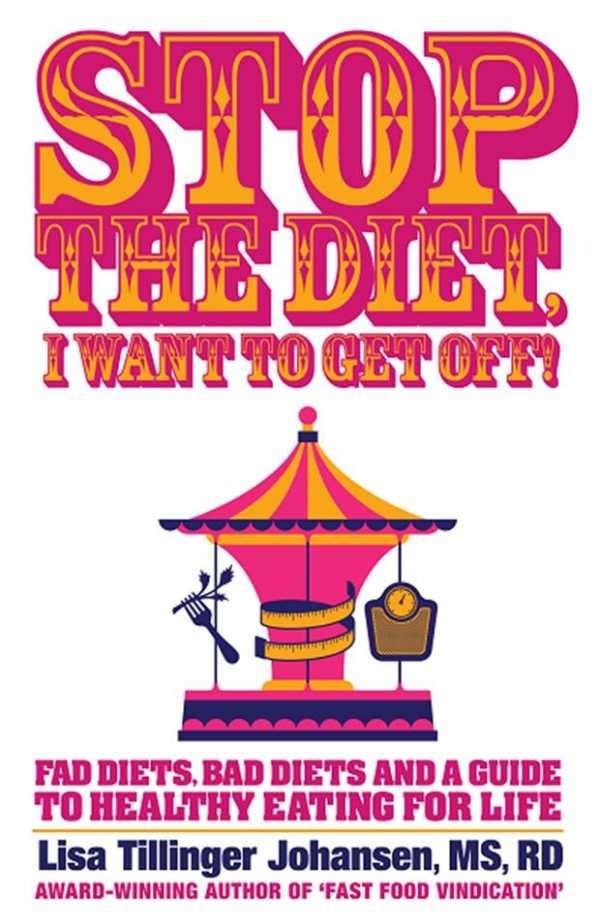Stop the Diet, I Want to Get Off!
Fad Diets, Bad Diets and a Guide to Healthy Eating for Life
- 2015 INDIES Winner
- Gold, Health (Adult Nonfiction)
Yo-yo dieters and newbies alike should pick up Johansen’s witty book before wasting any time, money, or heartache on ineffective fad diets.
A dietitian contrasts fad diets with sensible health guidelines in this encouraging primer. “Too little or too much of something isn’t a good thing. Our bodies like balance,” dietitian Lisa Tillinger Johansen argues in Stop the Diet, I Want to Get Off! Fad diets, though, are all about extremes, and while they promise quick results, they are difficult to maintain. Surveying fad diets old and new in a conversational style, Johansen gives the merits and dangers of each and suggests realistic principles for healthy eating and exercise.
Fad diets, Johansen jokes, date back to William the Conqueror’s alcohol-only regimen. Nowadays they range from high protein (Atkins, Paleo) to low calorie (meal replacement and/or fasting) and are often encouraged by celebrities. That’s not to mention the ludicrous ones: drinking vinegar, eating mostly grapefruit or cabbage soup, or swallowing a tapeworm. Laughable as these are, some cause real damage. Excessive protein strains the kidneys and colon, for instance. Meanwhile, 30 percent of adults stay away from gluten even though they are not allergic. With wit and science, Johansen provides a way through all the diet hype.
The author boldly counters a number of common myths about dieting. For example, the blood type diet is not supported by data, and cutting out gluten does not equate to weight loss, despite the “wheat belly” theory. Unwanted weight is a simple matter of too many calories and not enough exercise. In fact, she refers to exercise as a “miracle drug” with wonderful side effects. Diets she does advocate are not restrictive fads but reflections of a wholesome, balanced lifestyle, such as the Mediterranean diet, the DASH diet, and vegetarianism.
Apart from any structured diet, however, this book offers straightforward guidance about nutritious everyday eating, such as how to divide up the food types on a plate, how to gauge portion sizes, and how to interpret nutrition facts on packaging. Helpful charts and images provide comparisons of diet types, estimations of calorie-burning activities, and visual aids for judging portions. Bullet-pointed lists and anecdotes or important quotes set out in bold font serve to organize the text into easy-to-read blocks to prevent information overload.
Johansen bases her advice on solid facts, but she cannily avoids the dry, scientific tone some experts might use. Instead, she uses chatty, informal language and personal stories to enliven her writing, like in the first chapter, where she imagines the prospective dieter’s perspective with this funny, slang-filled monologue: “Holy cow, I’m fat! … Surely that’s not me. Maybe if I put my glasses on…No, I’m still the same tub of lard. Bummer.”
Yo-yo dieters and newbies alike should pick up Johansen’s book before wasting any time, money, or heartache on ineffective fad diets.
Reviewed by
Rebecca Foster
Disclosure: This article is not an endorsement, but a review. The publisher of this book provided free copies of the book and paid a small fee to have their book reviewed by a professional reviewer. Foreword Reviews and Clarion Reviews make no guarantee that the publisher will receive a positive review. Foreword Magazine, Inc. is disclosing this in accordance with the Federal Trade Commission’s 16 CFR, Part 255.

